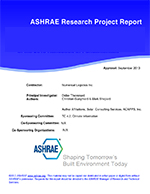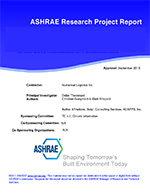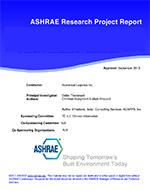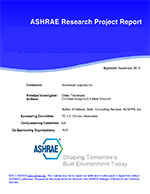-
-
Available Formats
- Options
- Availability
- Priced From ( in USD )
-
Available Formats
-
- Immediate download
-
$32.00Members pay $24.00
- Add to Cart
Customers Who Bought This Also Bought
-

RP-780 -- Relevance of Electric Heat Pump Testing and Rat...
Priced From $32.00 -

RP-700 -- Determine and Test Research Protocols for Evalu...
Priced From $32.00 -

RP-703 -- Room Air Movement Data for Validating Numerical...
Priced From $32.00 -

RP-733 -- Validation of the Ice on Pipe Algorithms Develo...
Priced From $32.00
About This Item
Full Description
HVAC sources in ceiling plenums are often major contributors to the noise level in occupied spaces below. Duct work or devices in the plenum, such as Variable Air Volume (VAV) boxes, are typical sources of such noise. The radiated sound passes through the ceiling, often only a few centimeters from the device, and enters the room below. This transmission occurs in addition to sound transmission along ducts and consequent radiation from air supply outlets.
At the beginning of this project the situation with respect to mis problem was as follows:
1. There was no standard test method for rating the ability of ceiling materials to reduce the transmission of sound from HVAC components in plenums.
2. It was known that transmission loss results obtained in reverberation room tests according to ASTM E90 [1] did not apply to this situation because of the close coupling between the source and the ceiling panels and the absence of a diffuse sound field in typical plenums.
3. There was no consistent body of information providing designers with typical sound attenuation values for common ceiling types with typical ventilation openings.
4. ARI standard 885-90 [2] provided a method to calculate the sound levels in a room below a plenum containing a sound source. The standard includes a "Plenum/Ceiling Effect" table for use when predicting sound radiation from VAV terminals installed above some typical ceilings. The information to prepare the standard was provided by a few manufacturers, but it did not form a consistent set based on a standard test procedure or accepted method of measurement.
ASHRAE RP-755 was initiated to investigate the transmission of sound through different ceiling types from different sources with the intent of providing more reliable design information to deal with sound transmission through ceilings close to HVAC devices. The development of the need for this project is discussed further in Section 4.





